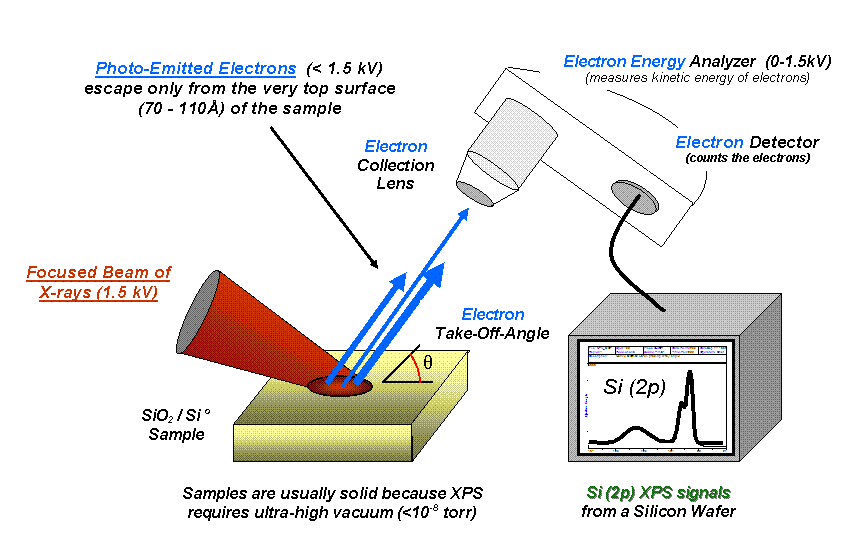Photoelectron Spectroscopy: Unveiling the Surface Chemistry of Nanomaterials
What is Photoelectron Spectroscopy?
Photoelectron spectroscopy (PES) is a surface-sensitive analytical technique that provides information about the elemental composition, chemical state, and electronic structure of a material's surface. PES is based on the photoelectric effect, where a material absorbs photons and emits electrons (called photoelectrons) with specific kinetic energies. By analyzing the energy distribution of these photoelectrons, researchers can gain valuable insights into the surface properties of materials, including nanomaterials.

Types of Photoelectron Spectroscopy
There are two main types of photoelectron spectroscopy, differentiated by the energy range of the incident photons:
- X-ray Photoelectron Spectroscopy (XPS): XPS uses soft X-rays (typically Al Kα or Mg Kα) to probe the core energy levels of atoms. XPS provides quantitative information about the elemental composition, chemical state, and oxidation state of the sample surface.
- Ultraviolet Photoelectron Spectroscopy (UPS): UPS utilizes ultraviolet photons (typically from a He discharge lamp) to investigate the valence band structure and electronic properties of materials. UPS is particularly useful for studying the electronic structure, work function, and molecular orbital energies of nanomaterials and organic thin films.
Applications in Nanotechnology
Photoelectron spectroscopy has found numerous applications in the field of nanotechnology:
- Surface Chemistry: PES is extensively used to study the surface chemistry of nanomaterials, including the identification of surface functional groups, adsorbates, and contaminants.
- Nanomaterial Synthesis: PES can monitor the growth and synthesis of nanomaterials in real-time, providing insights into the growth mechanism, surface composition, and chemical state evolution during the synthesis process.
- Interfacial Analysis: PES is a powerful tool for investigating the interfaces between nanomaterials and other materials, such as in nanocomposites, heterostructures, and nanoscale devices.
- Environmental and Biological Applications: PES is used to study the surface interactions of nanomaterials with environmental and biological systems, providing information about the adsorption of molecules, proteins, and pollutants on nanomaterial surfaces.
Advantages and Limitations
Photoelectron spectroscopy offers several advantages for surface analysis, including high surface sensitivity, quantitative elemental composition analysis, and chemical state information. However, it also has limitations such as limited spatial resolution, the requirement of ultra-high vacuum conditions, and difficulties in analyzing rough or insulating surfaces.
Further Reading
Applied Surface Science Advances, Review on surface-characterization applications of X-ray photoelectron spectroscopy (XPS): Recent developments and challenges
Nature Reviews Methods Primers, X-ray photoelectron spectroscopy of thin films
